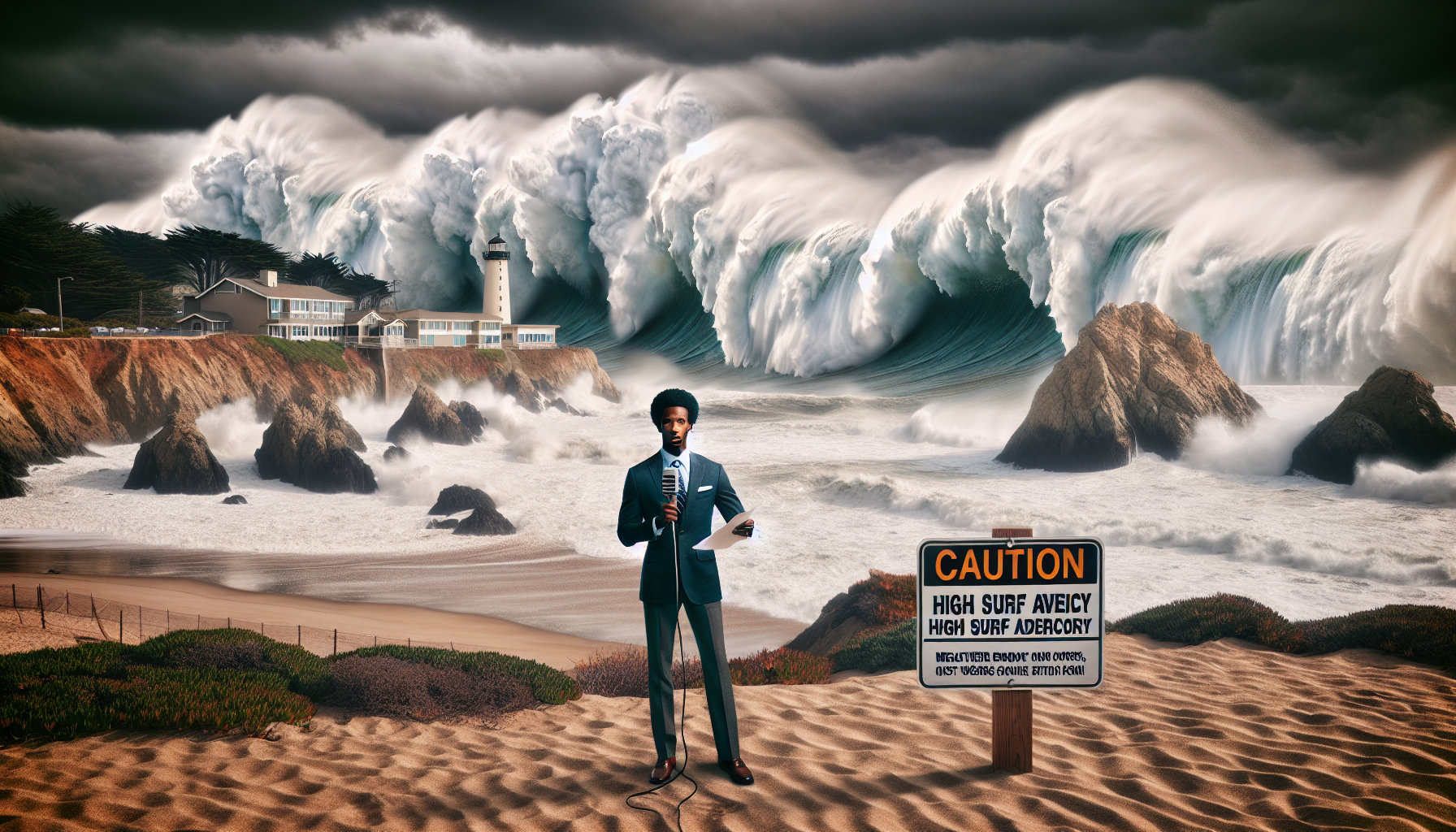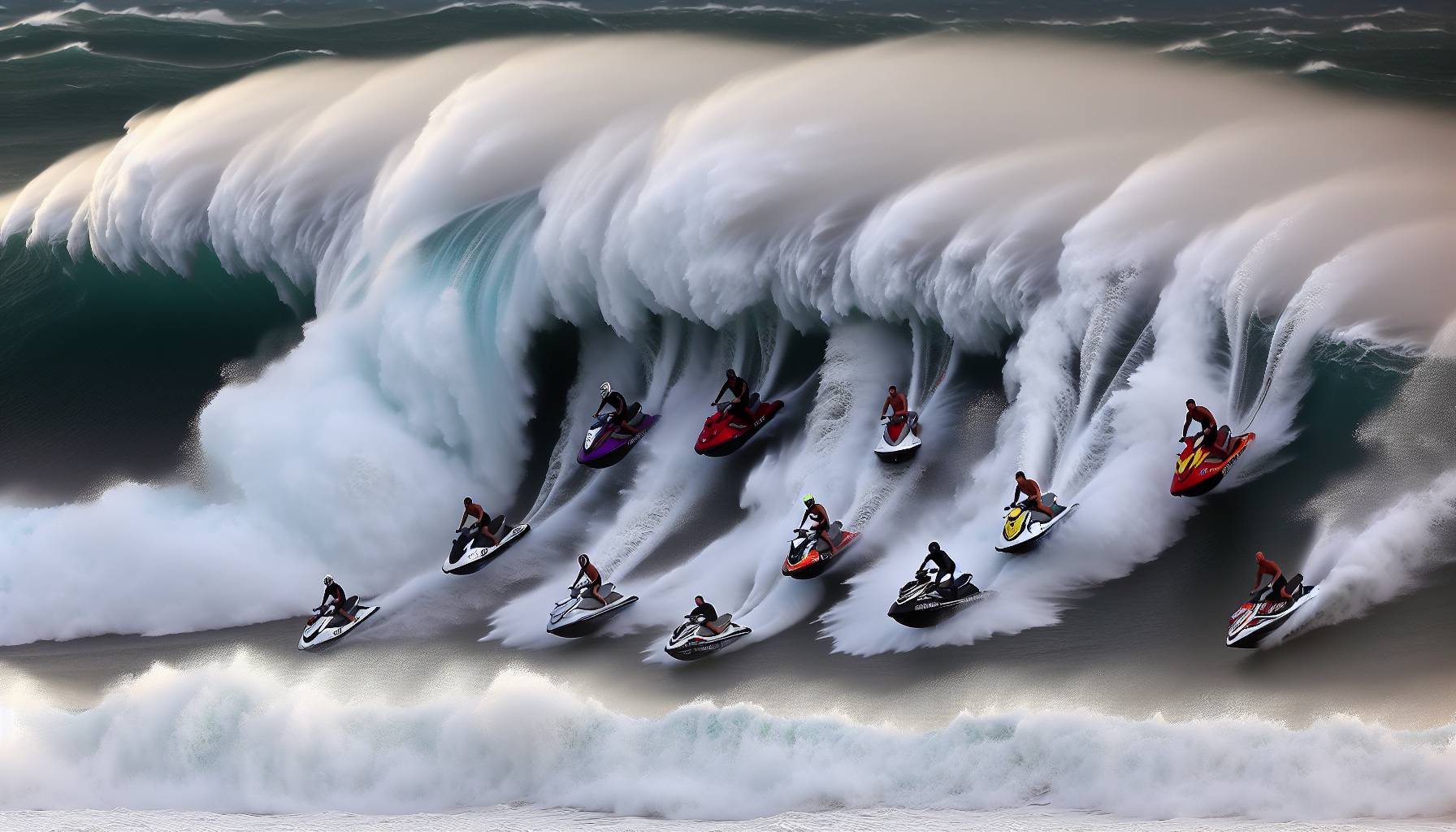
High surf advisory details
The National Weather Service (NWS) in San Francisco, CA, has issued a high surf advisory, warning of hazardous ocean conditions along the California coast. The advisory was announced on Thursday at 2:55 p.m. and is set to remain in effect until Monday at 9 p.m.
During this period, large breaking waves between 4.5 to 6 metres (15 to 20 feet) are expected, with occasional sets reaching even greater heights. These powerful swells are being driven by a strong Pacific storm system, generating long-period waves that will impact the shoreline.
Strong rip currents and sneaker waves pose a significant risk to beachgoers and surfers. Sneaker waves, which are unpredictable and can surge much farther up the beach than expected, increase the danger of being swept into the ocean. Additionally, the force of these waves can create hazardous conditions near jetties, rocks, and coastal cliffs.
The advisory warns that the most intense wave activity is expected during high tide periods, amplifying the risk of coastal erosion and dangerous shore break conditions. Swell energy is forecasted to peak over the weekend, making Saturday and Sunday particularly hazardous for those venturing into the water.
“These conditions are not only dangerous for inexperienced surfers but also pose a challenge for even the most skilled watermen and women,” the NWS stated in its advisory.
Authorities urge caution for anyone planning to visit the affected beaches, as the combination of strong surf and unpredictable wave patterns can create life-threatening situations.
Affected coastal areas
The high surf advisory affects several key coastal regions along the California coastline, including the Coastal North Bay, Point Reyes National Seashore, the San Francisco Peninsula Coast, Big Sur, and San Francisco County. These areas are known for their rugged shorelines, dramatic cliffs, and popular surf breaks, making them particularly vulnerable to the powerful swells generated by the incoming storm system.
Point Reyes National Seashore, located north of San Francisco, is expected to experience some of the strongest wave activity. The exposed coastline here often amplifies swell energy, leading to dangerous shore break conditions and strong rip currents. Beachgoers and surfers should exercise extreme caution, especially near rocky outcrops and steep beaches where waves can surge unexpectedly.
Further south, the San Francisco Peninsula Coast, including Ocean Beach, will also see significant wave action. Ocean Beach is well known for its powerful surf, and with waves forecasted to reach 4.5 to 6 metres (15 to 20 feet), conditions will be treacherous. The combination of strong currents and shifting sandbars can create unpredictable hazards, making it a high-risk area for both surfers and swimmers.
Big Sur, with its dramatic cliffs and remote beaches, will not be spared from the intense surf. The region’s steep coastal geography can amplify wave energy, increasing the risk of sneaker waves and coastal erosion. Visitors should remain vigilant, as waves can surge far beyond the waterline, posing a serious threat to those standing too close to the shore.
San Francisco County, including popular surf spots like Fort Point and Pacifica, will also experience hazardous conditions. While experienced surfers may be tempted by the large swells, authorities warn that the unpredictable nature of the waves and strong rip currents make these areas particularly dangerous during the advisory period.
With the swell expected to peak over the weekend, authorities are urging caution for anyone planning to visit these coastal areas. Even those staying onshore should be aware of the risks, as sneaker waves can unexpectedly sweep people off rocks or beaches and into the ocean.
Safety precautions and recommendations
Authorities are strongly advising surfers, swimmers, and beachgoers to take extra precautions during the high surf advisory period. The combination of large waves, strong rip currents, and unpredictable sneaker waves makes ocean conditions particularly hazardous.
For surfers, it is crucial to assess the conditions carefully before entering the water. Only highly experienced surfers with the appropriate skill level and equipment should consider paddling out. Even then, they should avoid isolated surf spots and always surf with a buddy. Wearing a leash and using a high-volume board suited for big waves can help improve safety in these challenging conditions.
Rip currents will be especially strong during this period, increasing the risk of being pulled out to sea. If caught in a rip current, surfers and swimmers should remain calm, avoid fighting against the current, and instead swim parallel to the shore until they can escape the pull. If unable to break free, floating on the surface and signaling for help is the best course of action.
Beachgoers should remain vigilant, as sneaker waves can surge unexpectedly and sweep people off rocks, jetties, or even dry sand. Authorities recommend staying well back from the water’s edge and avoiding climbing on coastal rocks or cliffs, which can become slippery and unstable due to the pounding surf.
For those planning to watch the waves, it is safest to do so from elevated areas or designated viewing points rather than standing too close to the shoreline. Large waves can break farther up the beach than expected, posing a serious risk to anyone standing too close to the water.
Emergency responders urge the public to heed all posted warnings and advisories. If in doubt, it is always best to stay out of the water and avoid unnecessary risks. Local lifeguards and surf rescue teams will be monitoring conditions, but personal responsibility and caution are key to preventing accidents during this period of extreme surf.
High surf advisory details
The National Weather Service in San Francisco has thrown up a high surf advisory, and it’s not one to take lightly. Issued at 2:55 p.m. on Thursday, this advisory is set to stick around until Monday at 9 p.m. That means four solid days of powerful waves hammering the coastline—perfect for the thrill-seekers, but a serious hazard for the unprepared.
We’re talking about waves reaching a massive 15 to 20 feet, with the biggest sets rolling in on west-facing beaches. That’s the kind of swell that can turn a casual paddle-out into a full-blown survival mission. Strong rip currents and sneaker waves are also in the mix, making conditions unpredictable and downright dangerous.
For surfers, this is the kind of swell that gets the heart racing—big, powerful, and demanding respect. But for fishos and beachgoers, it’s a different story. Those rogue waves can come out of nowhere, sweeping people off rocks and jetties in an instant. If you’re planning to wet a line, best keep a safe distance from the water’s edge.
Authorities are urging everyone to stay off exposed coastal areas and avoid turning their backs on the ocean. If you’re not experienced in heavy surf, this is not the time to test your luck. The ocean’s got plenty of bite this weekend—stay sharp, stay safe, and if you’re chasing waves, make sure you know what you’re in for.
Affected coastal areas
This advisory isn’t just for one or two beaches—it’s covering some of the most iconic and rugged stretches of California’s coastline. The affected areas include the Coastal North Bay, with hotspots like Point Reyes National Seashore, the San Francisco Peninsula Coast, and all the way down to Big Sur. If you know these spots, you know they can serve up some serious power when the swell’s pumping.
Point Reyes is already notorious for its unpredictable waters, and with this kind of swell, it’s going to be a full-on washing machine. The San Francisco Peninsula, including Ocean Beach, is another beast entirely—strong currents, heavy waves, and a reputation for humbling even the best surfers. And then there’s Big Sur, where the cliffs meet the Pacific in dramatic fashion. With waves this size, even the most scenic lookouts could turn into danger zones.
For surfers, this means prime conditions at the right breaks—but only for those who know what they’re doing. If you’re not comfortable in double-overhead surf with serious power behind it, best to sit this one out. For fishos, rock fishing is looking downright sketchy. Those sneaker waves can come out of nowhere, and no fish is worth getting swept off the rocks for.
Local authorities are warning everyone to keep a safe distance from the water, especially on exposed beaches and rocky outcrops. If you’re heading out for a surf, make sure you’ve got the right experience and a solid exit plan. And if you’re just there to watch, stay well back—this isn’t the weekend to be testing your luck with the Pacific.

